By Matthew Romansky
From Mr. Wyden, the group learned a lot about sponsorship at the Rose Bowl stadium. One piece of information that he shared with us was that, besides a few permanent signs, the stadium has moved to changeable LED advertising in order to maximize cost efficiency when needing to change sponsorship logos. In addition, Mr. Wyden explained that UCLA recently signed an agreement to continue playing their home games at the Rose Bowl for an additional 30 years, at which point he hopes the stadium will have so much additional revenue that the University will be more reliant on the stadium than the stadium is on UCLA. Mr. Wyden also told us that the main source of revenue for the stadium is the 2,500 seats in the Pavilion during UCLA football games. Each loge box is sold for $3,000 per season, and all of that revenue is generated for the stadium itself. In terms of concerts, all of the seating revenue goes directly to the performers. However, the Rose Bowl makes a significant amount of money from ticket rebates, parking costs, and food and beverage services. Finally, Mr. Wyden shared with us the main goal, or mission statement of the Rose Bowl. He said that the goal for the stadium is to maintain and preserve this building for as long as possible so that it remains a national landmark. Overall, it was a very interesting experience visiting the Rose Bowl, and absolutely a once in a lifetime opportunity to get behind the scenes information about such an amazing venue.
Today was yet another beautifully intriguing day in Southern California. Our latest series of adventures began with a trip to the iconic Rose Bowl located in the quiet Los Angeles suburb of Pasadena, CA. We were blessed with an exclusive tour from the Marketing and Communications Consultant of the Rose Bowl, Lauren Hall, who of course was a Syracuse alumnus. The ‘Bowl itself is currently in the midst of a $200 million renovation that is being paid for by a bond from the municipality of Pasadena. The venue will be hosting 18 major events this year including 6 UCLA home football games, The Rose Bowl Game, and 3 consecutive One Direction concerts. In addition, we were able to experience the newly established Terry Donahue Pavilion (2013), which features premium seating and suites for those looking for an exclusive experience.
Our group was also granted the chance to have a Q&A session with the CRO of the Rose Bowl, Jens Weiden. He was able to articulate to us the nuances of generating revenue for the facility. There is a definite struggle that exists for the Rose Bowl in terms of revenue generation, and that is primarily due to the mission of maintaining the historic image of the venue. There are only two permanent sponsorship signs located within the entire stadium, and Weiden iterated to us that there aren’t any plans to expand upon that in the near future.
Our second venture of the day was to the StubHub Center, which is an AEG facility that houses a variety of venues. We toured the entire grounds that include the Los Angeles Galaxy/Chivas USA soccer stadium, the only Velodrome in North America, and an 8,000 seat tennis venue. Our tour guide and info-session leader was Katie Pandolfo, who doubled as the facilities manager for the entire plaza. It was a very culturally enriching experience.
To wrap up the day, we went squad deep to the Staples Center to check out the Los Angeles Kings experience. Despite being extremely rowdy in the crowd, we weren’t able to will the Kings to victory as they came up short 3-2 in a hard fought battle against the Toronto Maple Leafs.
By Brynn Foley
Day 5 proved to be a long, busy day like the others! We started the day at 8:30am to visit the Rose Bowl. This was one of my favorite parts of the whole trip. Lauren Hall, a Syracuse graduate, gave us a tour of the Rose Bowl, beginning with the visitors locker room. I thought it was interesting that they made the home and visitor locker rooms the exact same so as to not favor one team over the other. The Rose Bowl will be hosting 18 events this year, among other private events including corporate parties.
What really struck me through this tour was Hall’s background. She worked for about 4 or 5 years for AEG after developing relationships as a photographer. AEG is the worldwide entertainment and sporting company in the world. It has thousands of employees, and encompasses what one would think of as a corporate company. Hall made the move to the Rose Bowl from AEG, switching from thousands of employees to 25 full-time employees. When she told me her story, I couldn’t help but think of myself, and how I could see myself working with a smaller company, rather than a corporate one. Though Hall is overwhelmingly busy handling all of the Rose Bowl’s marketing, designing, PR, and branding, she seems happy with the “family” atmosphere that the Rose Bowl gives off.
After Hall, the Chief Revenue officer, Jens Weiden, talked to us outside as we sat in the bleachers at the Rose Bowl. Weiden was really interested in talking to us about the revenue details at the Rose Bowl, and he answered all of our questions efficiently. Weiden talked a lot about how the Rose Bowl is a unique stadium in that it is in the middle of a residential neighborhood. The city of Pasadena owns the Rose Bowl, and so it monitors its taxes and revenues. The Rose Bowl is essentially used by things in line with what Pasadena thinks it should be used for.
According to Weiden, over 20,000 fans stands for a “major event.” He also highlights that the Rose Bowl cannot just depend on its major events to fund the 93 year old stadium. They use private events as well to take in revenue. One of the main goals of the Rose Bowl is to keep the stadium relevant and to preserve the building.
One of the most interesting and intriguing things I found at the Rose Bowl was the “cleanliness” of the stadium in terms of sponsorship signing. They have two big permanent signs (Honda and Bank of the West). The other permanent signs come on the LED screens to save money. The Rose Bowl partners with IMG to sell sponsorships. I loved the Rose Bowl, and as an added bonus, Lauren took us up to the media room and press room. It was one of the best views I have seen with the Pasadena mountains in the background!
After the Rose Bowl tour and a lunch break at In-n-Out, we headed to StubHub Park (formerly named under The Home Depot). Here we talked to former Olympian Adam Durendeck and the facilities manager Katie Pandolfo. Katie was really interesting because she is one of the only women that is a facilities manager a stadium. In a primarily male-dominanted industry, she really was an amazing person to talk to! She said she has never felt like a second tier, and really takes her work seriously.
The StubHub stadiums were really awesome. The first thing I noticed was how clean and organized the stadium was. Pulling into the park, the grass was groomed, flowers were planted, and palm trees lined the streets. Since AEG owns StubHub park, it goes to show how AEG wants to present themselves to its customers. We went into the cycling building first, and then made our way to the Tennis/Boxing facility, and finally the soccer stadium. The stadiums were in pristine condition, often finding themselves shooting commercials, TV shows, and movies there. One of the coolest things that stuck with me was that Katie said her priority in the workforce is to maintain a balance. One thing she always says to her employees and herself is “work, life, balance.” It is difficult to balance a social life within the sports industry, but she says that maintaining this balance is a priority for her.
After leaving StubHub, we attended an LA Kings game at the Staples Center. Even though they lost, it was still a really cool experience, and only my second professional hockey game. All in all, it was a long day, but one of my favorites after seeing how much small companies can really grow!
By Joey Weinberg
The utter dominance and game changing ingenuity of AEG was prevalent once again, this time in the form of StubHub Center and LA Kings home games. From the lush array of grass that defines the soccer stadium to the banked tracks of North America’s only indoor velodrome, AEG’s StubHub Center provides a unique set of venues in its complex. Katie Pandolfo, General Manager of StubHub Center, led us on a tour of the complex, where she explained the differences between hosting a LA Galaxy and a Chivas USA home game. Former Olympian track cyclist Adam Duvendeck then gave us the history of the complex’s Velodrome and how Olympians regularly train there.
As an LA native and die-hard Kings fan, the confines of Staples Center were nothing new to me. And tonight’s game atmosphere was just as vibrant as it always is. From the amazing pre-game light show to the clips of Cartman of South Park cheering “Go Kings Go,” AEG and the Los Angeles Kings know how to keep a crowd entertained. Though the Kings lost a heartbreaker, attending the game with other SU students made this one the most memorable games I’ve gone to.
Prior to going to StubHub Center and the Kings game, we stopped by the famed Rose Bowl in beautiful Pasadena and learned about the unique situations the stadium is put in. Because the stadium is in a residential area, the city council of Pasadena only allows a maximum of 12 major events to take place in the stadium all year (this year the maximum number of events has been raised to 18). Because of this, the Rose Bowl has to come up with unique ways to generate enough revenue for its self. A big source of revenue has come from private, small-scale events leased out by the stadium and the many films and commercials that use its confines.
The different LA-area venues and events that we visited today continue to show how LA’s sport and entertainment venues dominate the city’s culture.

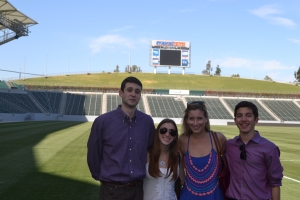



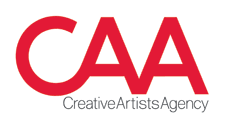
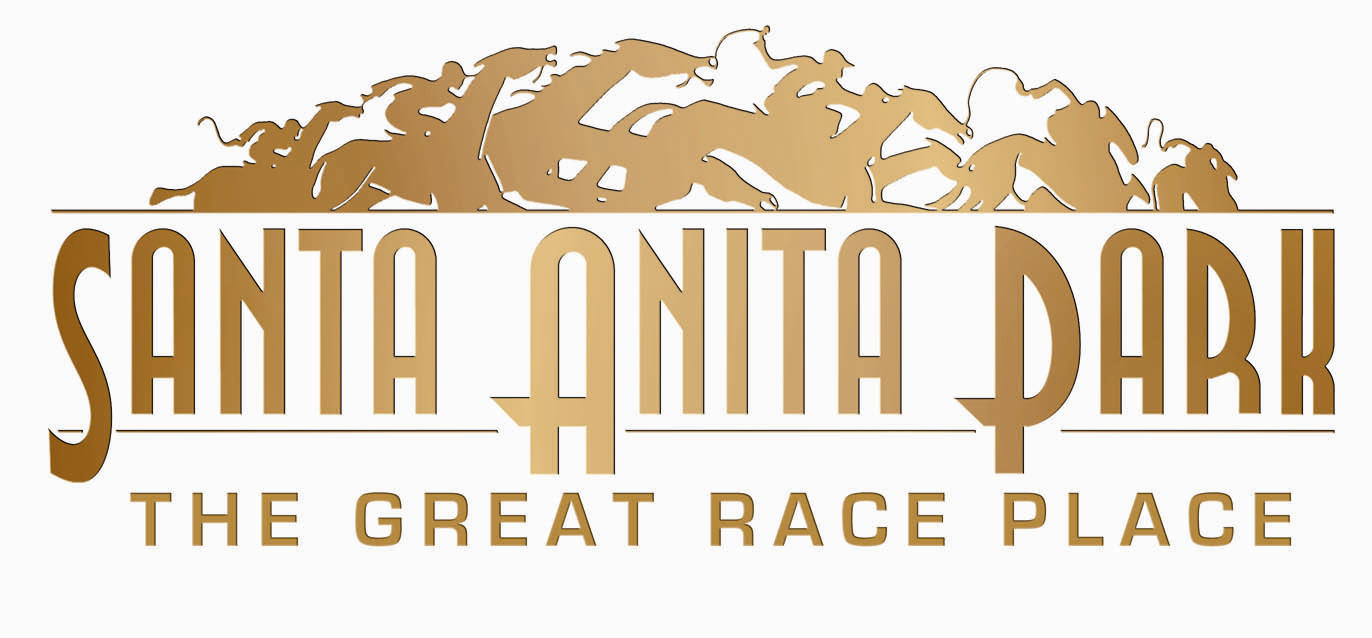
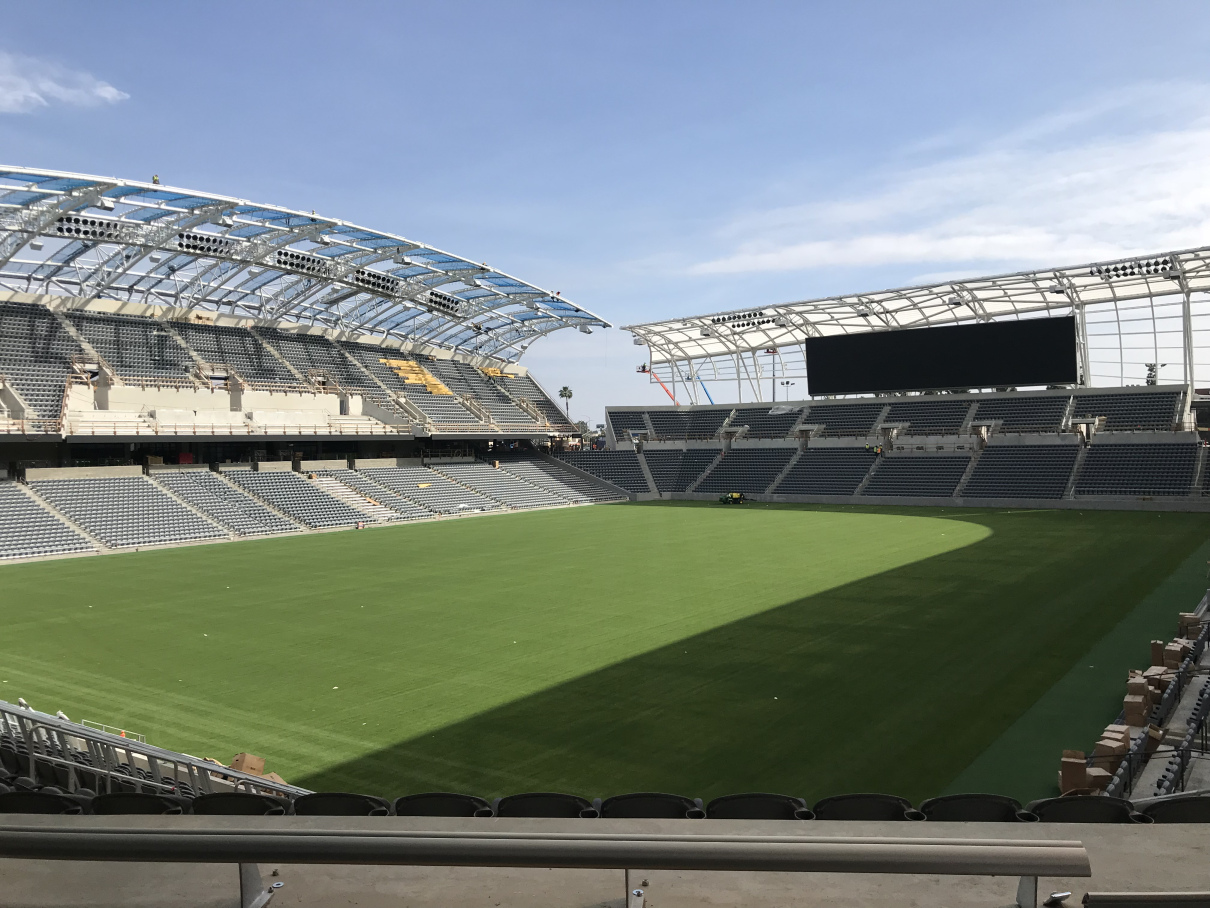



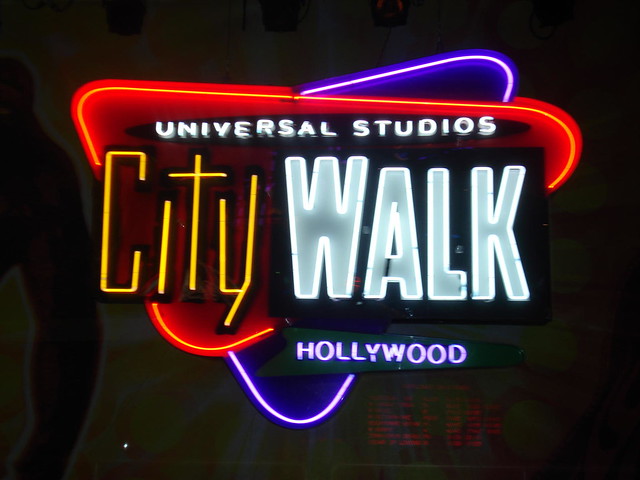
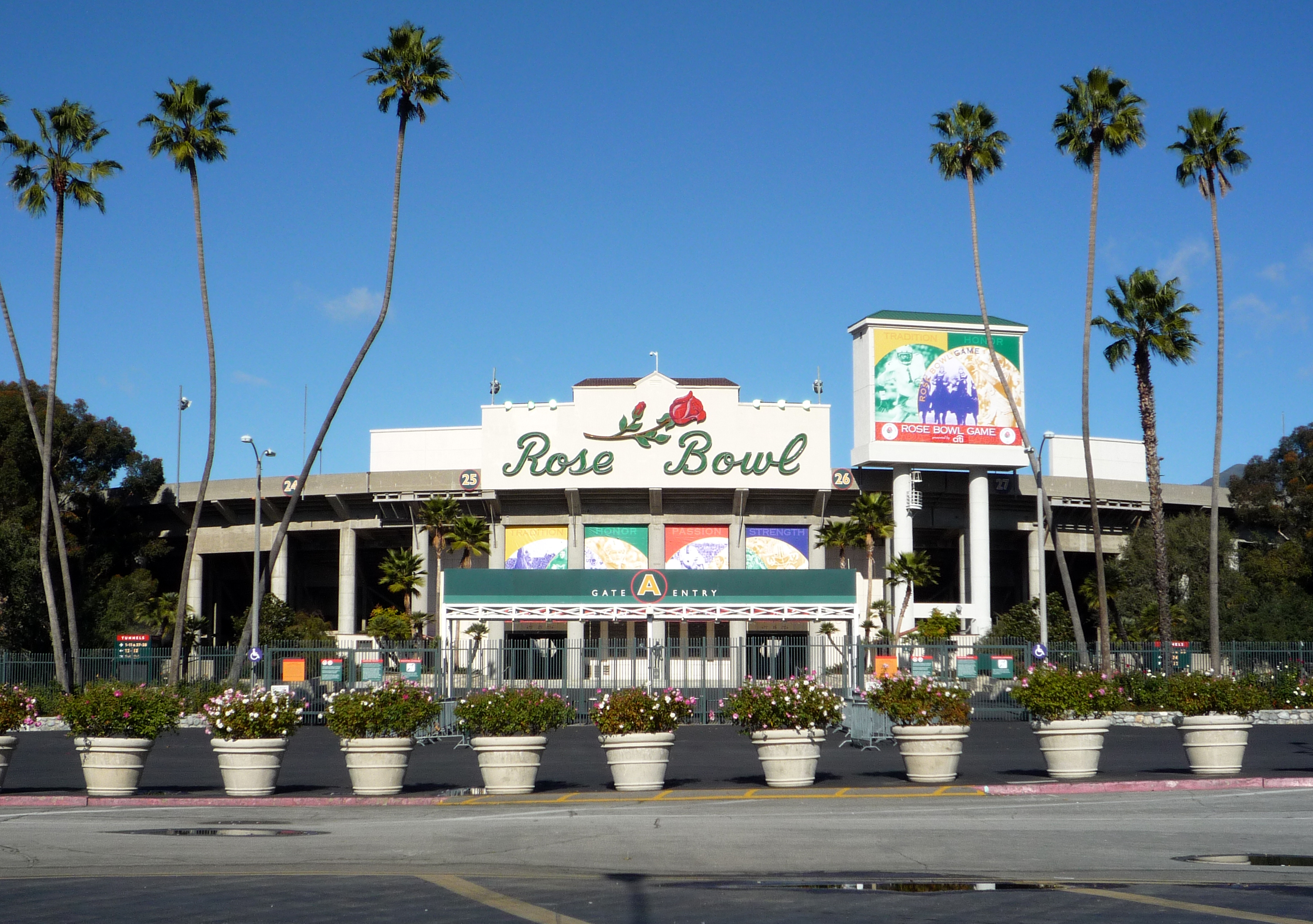
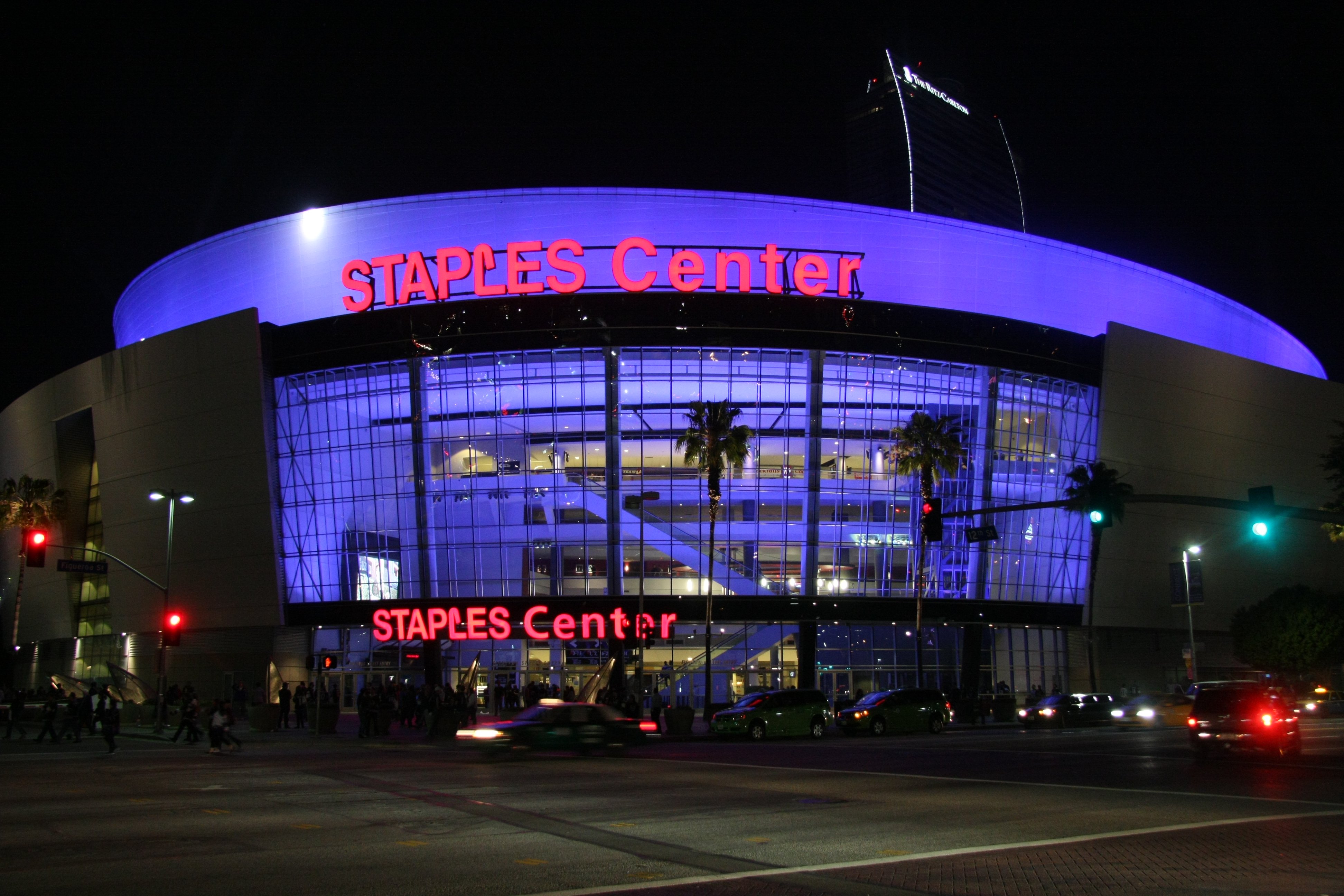

Leave a comment